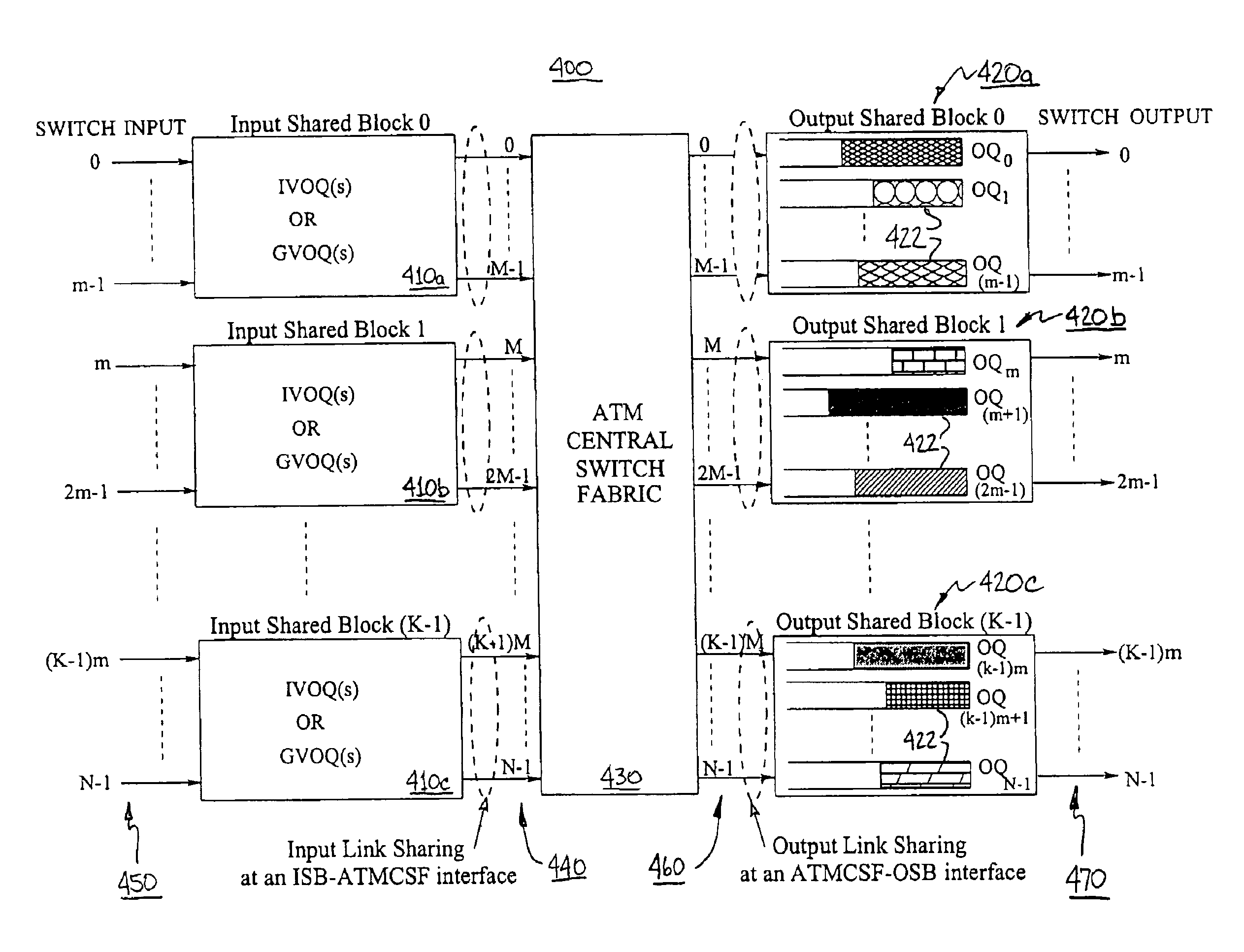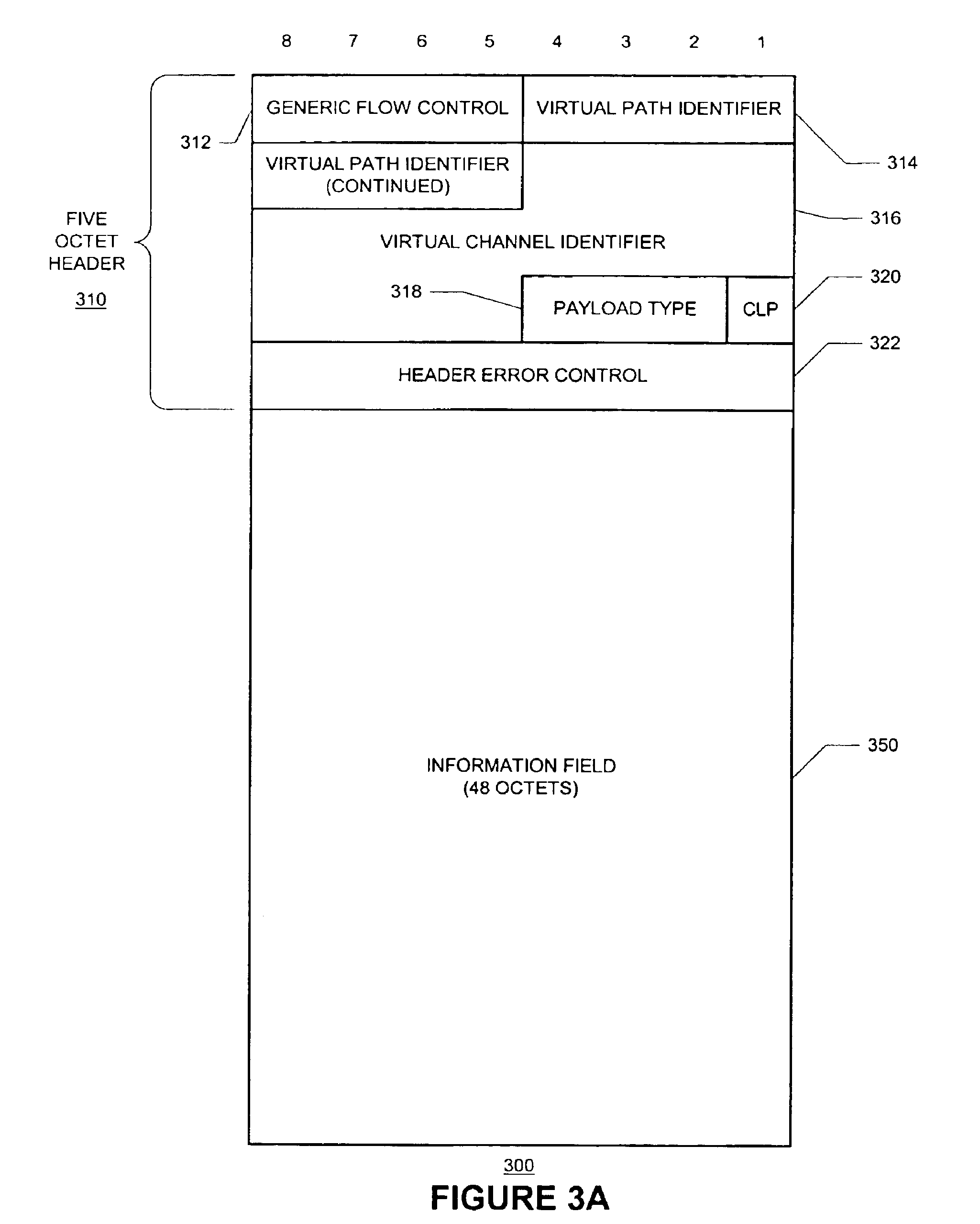Methods and apparatus for switching packets
a packet switching and packet technology, applied in the field of methods and apparatus for switching packets, can solve the problems of inefficient data traffic carrying “bursty” data traffic, low information transfer rate of many services, and introduction of circuit switching and its limitations, and achieve high scalability and terabit multicast packet switch
- Summary
- Abstract
- Description
- Claims
- Application Information
AI Technical Summary
Benefits of technology
Problems solved by technology
Method used
Image
Examples
Embodiment Construction
[0071]The present invention involves novel methods, apparatus and data structures for switching packets. The following description is presented to enable one skilled in the art to make and use the invention, and is provided in the context of particular applications and their requirements. Various modifications to the disclosed embodiments will be apparent to those skilled in the art, and the general principles set forth below may be applied to other embodiments and applications. Thus, the present invention is not intended to be limited to the embodiments shown and the inventors regard their invention as the following disclosed methods, apparatus and data structures and any other patentable subject matter to the extent that they are patentable.
[0072]In the following, functions which may be performed by the present invention are introduced in § 4.1. Then, structures, processes, methods and data structures which may be used to effect those functions are described in § 4.2. Finally, com...
PUM
 Login to View More
Login to View More Abstract
Description
Claims
Application Information
 Login to View More
Login to View More - R&D
- Intellectual Property
- Life Sciences
- Materials
- Tech Scout
- Unparalleled Data Quality
- Higher Quality Content
- 60% Fewer Hallucinations
Browse by: Latest US Patents, China's latest patents, Technical Efficacy Thesaurus, Application Domain, Technology Topic, Popular Technical Reports.
© 2025 PatSnap. All rights reserved.Legal|Privacy policy|Modern Slavery Act Transparency Statement|Sitemap|About US| Contact US: help@patsnap.com



